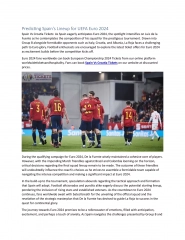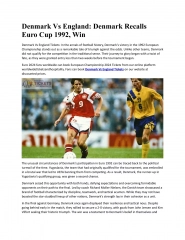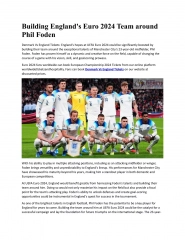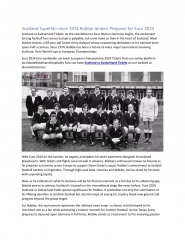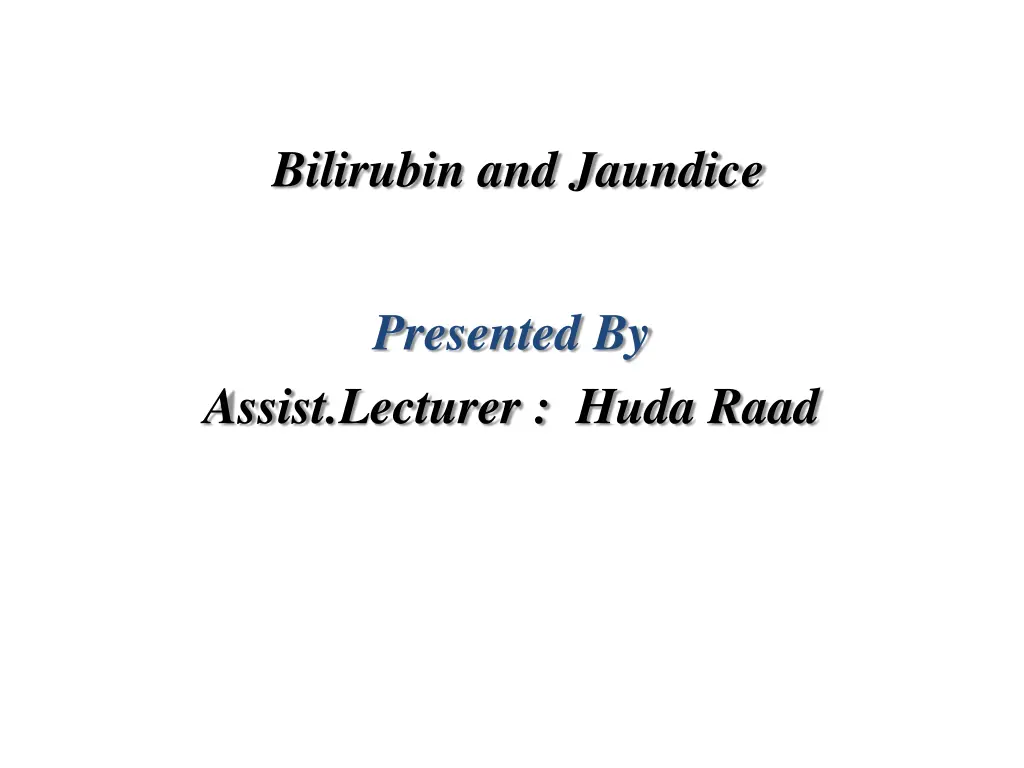
Understanding Bilirubin and Jaundice: Types, Symptoms, and Treatment
Explore the significance of bilirubin in the body, different forms of jaundice, their causes, symptoms, and treatment options. Learn about pre-hepatic, hepatocellular, and post-hepatic jaundice, along with their distinct characteristics. Discover how jaundice can be managed through various methods, such as blood transfusion and more.
Download Presentation

Please find below an Image/Link to download the presentation.
The content on the website is provided AS IS for your information and personal use only. It may not be sold, licensed, or shared on other websites without obtaining consent from the author. If you encounter any issues during the download, it is possible that the publisher has removed the file from their server.
You are allowed to download the files provided on this website for personal or commercial use, subject to the condition that they are used lawfully. All files are the property of their respective owners.
The content on the website is provided AS IS for your information and personal use only. It may not be sold, licensed, or shared on other websites without obtaining consent from the author.
E N D
Presentation Transcript
Bilirubin and Jaundice Presented By Assist.Lecturer : Huda Raad
What is bilirubin? It is a brownish yellow substance found in bile and it is produced during the breakdown of old RBCs then removed from the body through feces. How many forms of bilirubin are there? There are two forms: Conjugated (direct) bilirubin: water -soluble Direct bilirubin is the form of bilirubin which has been conjugated with glucoronic acid and is excreted in the bile. it reacts directly with the reagent.
Unconjugated (indirect) bilirubin: fat -soluble Indirect bilirubin is the direct product of the breakdown of haemoglobin. The unmodified bilirubin binds to albumin, facilitating easy transport from blood to the liver Total bilirubin is a combination of direct and indirect bilirubin
What is jaundice? It is a yellowish pigmentation of skin and whites of the eye due to high serum bilirubin levels and may cause itchiness.
Pre-hepatic jaundice: It is caused by anything that causes increased hemolysis rate. thalassemia Crigler-Najjar Syndrom
There is increased production of urine urobilinogen with no bilirubin in urine. Hepatocellular jaundice: It can be caused by : Acute hepatitis Hepatotoxicity Alcoholic liver disease There will be increased levels of both conjugated and unconjugated bilirubin in blood In newborn it is called neonatal jaundice
Post-hepatic (obstructive) jaundice: It is caused by interruption to the bile drainage in the biliary system by: The patient has pale stool and dark urine Itching may occur due to bile salts deposition liver flukes
How can jaundice be treated? It can be treated by: Blood transfusion : is a routine medical procedure in which donated blood is provided to you through a narrow tube placed within a vein in your arm. Phototherapy : uses lightwaves to treat certain skin conditions ex. Eczema (uses made source of UV light )
What is the benefit of making bilirubin test? To check for liver function and signs of liver diseases To check for bile duct obstruction To diagnose any destruction in RBCs (hemolysis) To decide whether newborn babies with neonatal jaundice need treatment
Reference levels of bilirubin: > 5 days-60 years: TB (0.3-1.2) mg/dl 3-5 days: TB (1.5-12) mg/dl , DB (<5.2) mg/dl Newborns usually produce more bilirubin than adults do because of greater production and faster breakdown of red blood cells in the first days of life. Normally, the liver filters bilirubin from the bloodstream and releases it into the intestinal tract for excretion. How can bilirubin be measured in labs? By measuring total bilirubin and direct bilirubin concentration in the blood using supplied kits then indirect bilirubin can be obtained by subtracting direct from total bilirubin concentration. DB (< 0.2) mg/dl



